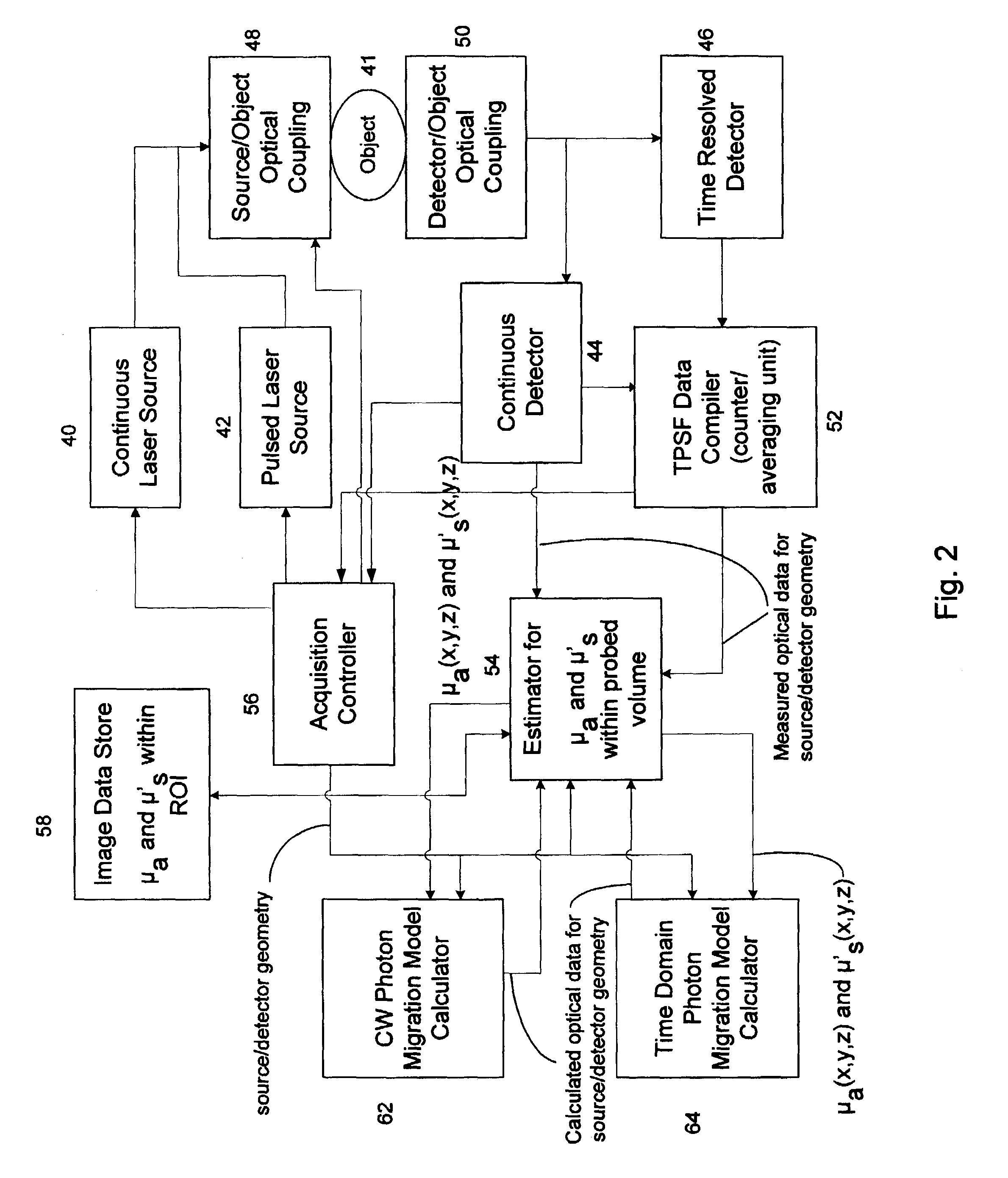Method and apparatus for combining continuous wave and time domain optical imaging
- Summary
- Abstract
- Description
- Claims
- Application Information
AI Technical Summary
Benefits of technology
Problems solved by technology
Method used
Image
Examples
Embodiment Construction
[0022]In the present description, by CW measurements it is meant optical signals measured while the light source that illuminates the object to be imaged is continuously on, namely a steady state flux measurement.
[0023]By Time Domain (TD) measurements, it is meant that the optical signal is measured as a function of time following a brief pulse of the light source. The resulting signal is the so-called temporal point spread function (TPSF), and the TPSF data collected may be either one, two, a few or several points on the TPSF (often referred to as different time gates), a single parameter resulting from a plurality of points, such as a slope or other characteristic of the TPSF curve, or the whole TPSF data. When the TD optical detector is a single-photon counting detector, the whole TPSF can be efficiently collected as a result of the measurement technique. When a gated ICCD is used, it is more practical to select time gates. Due to the nature of the detection system, the TPSF data...
PUM
 Login to View More
Login to View More Abstract
Description
Claims
Application Information
 Login to View More
Login to View More - R&D
- Intellectual Property
- Life Sciences
- Materials
- Tech Scout
- Unparalleled Data Quality
- Higher Quality Content
- 60% Fewer Hallucinations
Browse by: Latest US Patents, China's latest patents, Technical Efficacy Thesaurus, Application Domain, Technology Topic, Popular Technical Reports.
© 2025 PatSnap. All rights reserved.Legal|Privacy policy|Modern Slavery Act Transparency Statement|Sitemap|About US| Contact US: help@patsnap.com



